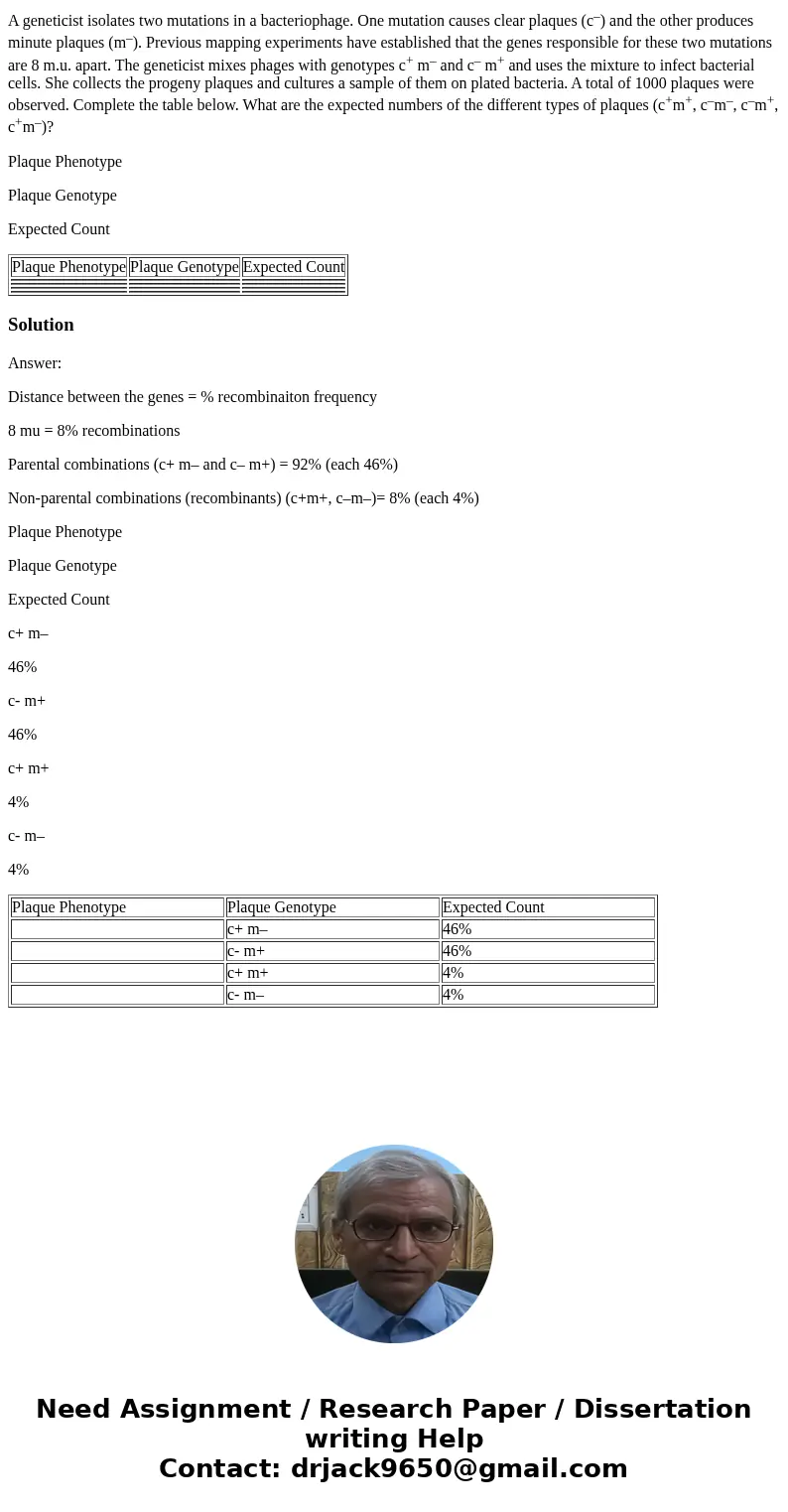A geneticist isolates two mutations in a bacteriophage One m
A geneticist isolates two mutations in a bacteriophage. One mutation causes clear plaques (c–) and the other produces minute plaques (m–). Previous mapping experiments have established that the genes responsible for these two mutations are 8 m.u. apart. The geneticist mixes phages with genotypes c+ m– and c– m+ and uses the mixture to infect bacterial cells. She collects the progeny plaques and cultures a sample of them on plated bacteria. A total of 1000 plaques were observed. Complete the table below. What are the expected numbers of the different types of plaques (c+m+, c–m–, c–m+, c+m–)?
Plaque Phenotype
Plaque Genotype
Expected Count
| Plaque Phenotype | Plaque Genotype | Expected Count |
Solution
Answer:
Distance between the genes = % recombinaiton frequency
8 mu = 8% recombinations
Parental combinations (c+ m– and c– m+) = 92% (each 46%)
Non-parental combinations (recombinants) (c+m+, c–m–)= 8% (each 4%)
Plaque Phenotype
Plaque Genotype
Expected Count
c+ m–
46%
c- m+
46%
c+ m+
4%
c- m–
4%
| Plaque Phenotype | Plaque Genotype | Expected Count |
| c+ m– | 46% | |
| c- m+ | 46% | |
| c+ m+ | 4% | |
| c- m– | 4% |

 Homework Sourse
Homework Sourse